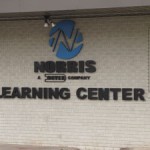 The Oklahoma Marginal Well Commission sponsored a seminar at the Norris Rods facility on March 22, 2011. There were two presentations, one by Norris Rods on well optimization and the second by Harbison-Fisher on pump choice and operation. The seminar was a great opportunity to further understand the equipment and concepts that pumpers must deal with in the field, plus there was opportunity to talk to field personnel and sales people. We also got to take a tour of the Norris Rods production facility.
The Oklahoma Marginal Well Commission sponsored a seminar at the Norris Rods facility on March 22, 2011. There were two presentations, one by Norris Rods on well optimization and the second by Harbison-Fisher on pump choice and operation. The seminar was a great opportunity to further understand the equipment and concepts that pumpers must deal with in the field, plus there was opportunity to talk to field personnel and sales people. We also got to take a tour of the Norris Rods production facility.
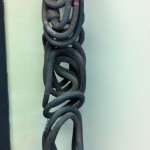 Jeff Done from Norris gave an excellent presentation on well optimization and how the right choice of sucker rods is vital to preventing failures and getting the best performance from a well.
Jeff Done from Norris gave an excellent presentation on well optimization and how the right choice of sucker rods is vital to preventing failures and getting the best performance from a well.
One of the things Jeff showed the class was a sucker rod that had been compressed in a wellbore (see picture). This emphasized to me the extreme forces, problems and dangers a pumper deals with, both above and below ground.
Monitoring and having the historical data of each well is important and the Pumper’s Friend software is poised to track basic well information such as service dates, equipment inventory, chemical usage, etc. These have been common topics of conversation with owners and pumpers.
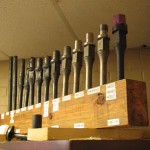
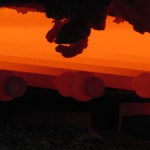 Another interesting display showed the step-by-step process of creating the end of a sucker rod. After the end of the rod stock is heated to a specified temperature, it goes through a multi-step stamping process. Each of several stamping steps (shown in the photo) brings the end of the rod closer to the final form. After the stamping steps are finished the rods are heat-treated (see picture of oven) and after several more steps are cleaned, threaded and painted.
Another interesting display showed the step-by-step process of creating the end of a sucker rod. After the end of the rod stock is heated to a specified temperature, it goes through a multi-step stamping process. Each of several stamping steps (shown in the photo) brings the end of the rod closer to the final form. After the stamping steps are finished the rods are heat-treated (see picture of oven) and after several more steps are cleaned, threaded and painted.
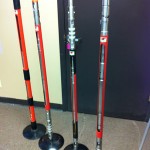 Kevin Matthews of Harbison-Fischer presented the second part of the seminar. He covered the basic components and operation of pumps used in artificial lift systems. From there he addressed how pumps are chosen based on various well conditions. He also discussed problems that pumpers must deal with in the field, such as gas-lock conditions and solids interference.
Kevin Matthews of Harbison-Fischer presented the second part of the seminar. He covered the basic components and operation of pumps used in artificial lift systems. From there he addressed how pumps are chosen based on various well conditions. He also discussed problems that pumpers must deal with in the field, such as gas-lock conditions and solids interference.
The Pumper’s Friend iPhone software can track and store surface data such as pressures and flows. Having that information readily available with the software in the field, will help pumpers to better understand how the well is performing, and when to schedule servicing of the downhole components.

Recent Comments